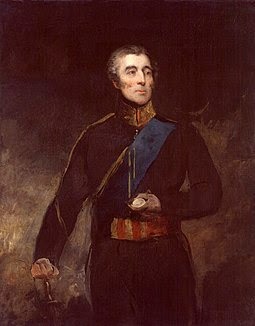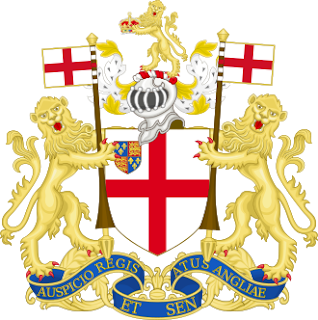The period after 1850 is often regarded as a golden age in British history, when the country forged ahead at home and internationally. With the restrictive mercantilist policy abandoned, Britain’s industrial and commercial lead saw a thriving economy and booming global trade. In what historian Eric Hobsbawm called ‘The Age of Capital’ Britain dominated the international stage first with manufactured goods, and then through its control of international banking, insurance and shipping. It seemed nothing would interrupt this happy progress.
Trade and capital
Indeed the 20 years from London’s Great Exhibition in
1851 to 1870, saw a strong economic performance. Apart from a sustained boom in
agriculture, production of manufactured goods rose rapidly. In mid-century
Britain’s industrial output counted for nearly half the world’s capacity. An
astonishing figure, but it could not continue, even with Australia’s Victoria
gold rush paying off Britain’s overseas debt.
The key statistic is share of world trade. In 1870
Britain’s slice of the global market was about 24%. From 1875 it started
falling, though of course trade volumes continued to rise rapidly. In 1860
Britain ranked as easily the world’s largest trading nation. But from the 1870s
it was losing its dominant position, mainly to Germany and the United States, countries industrialising quickly with new products
and new efficient production techniques. Britain still outstripped both these
nations in trade - and even more if trade-related services are included - but
its relative position, if unnoticed at the time, had started an inexorable
decline. By 1910 Britain’s share of world trade had fallen to 17%.
This coincided with the ‘Long Depression’ from 1873 to
1896 which followed the boom years. Falling profits and price deflation were
accompanied by more control of industry by the banks. Competitors like the USA
and newly united Germany applied tariffs while British trade was largely
free of them. These and other countries were able to build their industries and export
markets protected by tariff walls. The US population passed that of Britain and
Ireland in the 1850s (at 27m), and its growth was little affected later by the huge number (600,000), of Civil War deaths.
Overseas earnings
Britain countered the home depression through exports
to the Empire, but also increasingly via income from overseas investments, plus
insurance and commercial services. In 1880 more than 50% of world shipping was
British owned. By 1875 an estimated 35% of global capital investment was being
raised in London. In 1913 this had risen to 50%. And with domestic manufacturing from
the 1870s onwards being increasingly less profitable, finance was directed overseas, not always to
the Empire. Indeed, Latin America was a favourite location.
Despite the Long Depression, and from 1875 a declining
share of world trade, average living standards generally rose in Britain. This
was partly due to a sustained fall in prices as the economy benefited from a
rising population - it was operating on a bigger scale and more efficiently. And
also partly that while British overseas trade was running a deficit, the trade
gap was bridged through invisible earnings and international investment income
via interest and dividends.
The exports illusion
English merchant ship 'John Wood' approaching Bombay 1850
So the misperceptions? The image of Britain as the ‘workshop of the world’ lingered longer than the reality. From the late 19th century other countries’ manufacturing industries, especially in the chemicals and electrical spheres, were catching up fast. Also the idea that Britain’s main market was the Empire, and especially India, needs correcting. By the 1880s only a third of British trade was conducted with the whole of the Empire. The country’s biggest market, then as now, was Europe.
The Suez Canal was built, by the French, in the 1860s. But Britain rather shortsightedly opposed it at first. Strangely, it was felt to be a threat to British global trade. Needess to say opinions soon changed as sailing times on the routes to India and the Far East were cut. Indeed in 1875 Disraeli's government bought Egypt's shares in the Canal, giving Britain much more economic and political leverage in that part of the world.
But belief in a self-confident spirit of buccaneering enterprise, capturing global markets with manufactured goods, was illusory. Education in Britain was still classics based, while competitor nations were concentrating more on science and technology. Chemistry, physics and engineering were subjects slow to be taken up by British universities. Graduates were not expected to pursue these disciplines, as they were destined to become administrators in the Empire. The spirit of the amateur was much admired. AP Thornton once described Kennedy's Latin Primer, a standard public school text for much of the 19th and early 20th centuries, as 'one of the winding sheets of empire'.
The country was increasingly relying on overseas
investment income. And the rising commercial middle class often preferred to use the money they'd made to buy country
estates and ape the nobility. It's a little appreciated fact that most of Britain’s hereditary titles date not
from ages past, but from the third quarter of the 19th century.
Political and social change
In mid-century politics Tories became Conservatives
and Whigs Liberals. 1850-1900 was shared in government equally between them. The
Gladstone v Disraeli rivalry still holds the public imagination, though it was only
a small piece of the political tapestry. Disraeli was prime minister twice, for
under seven years in total, while Gladstone was prime minister four times, for
over 12 years. By Gladstone’s last stint in 1892 Disraeli had been dead for 11
years. In terms of service, Lord Salisbury’s was the longest. His three terms totalled
nearly 14 years, though he was ill for some of the last leg.
Several social and cultural Victorian myths also need dispelling.
Up to 90% of women worked outside the home in industrial, commercial,
agricultural or service jobs. Yet the false idea of the stay at home wife has stuck. Only
a few upper and upper middle class wives were in this category, another example
of public perception framed by novelists, often with a mission. The same
applies to living conditions. While they were often in many areas still very bad, steady improvements meant that 70% of people did
not live in slums.
Media distortions
Another impression still around today is that the
Victorian age was riddled with crime. It was not. The rise of popular print
media, especially the ‘penny dreadfuls’, meant a concentration on salacious and/or
violent crimes to feed a growing public appetite. Accordingly the press continually
distorted and exaggerated events to keep their readership happy. These
contemporary sources are hardly balanced or fair minded. The crime rate
actually fell over the period. But this is something from which today’s world, as we know, is still not immune.
Civil marriage was re-introduced in 1836. Before then many people in Britain - perhaps a majority - had not bothered to register via a religious route. Besides, few had property and inheritance to worry about. Church attendance steadily fell, but with the rise in wealth and living standards, formally tying the knot became more popular. The ‘lie back and think of England’ quip actually belongs to the 20th century. Britain was not full of opium dens (there were two). Matthew Sweet’s interesting work on Victorian myths is a prime source here. Finally didn’t Queen Victoria say after some colonial setback ‘We are not amused’? There is no evidence for this. It first appeared in 1919.
























